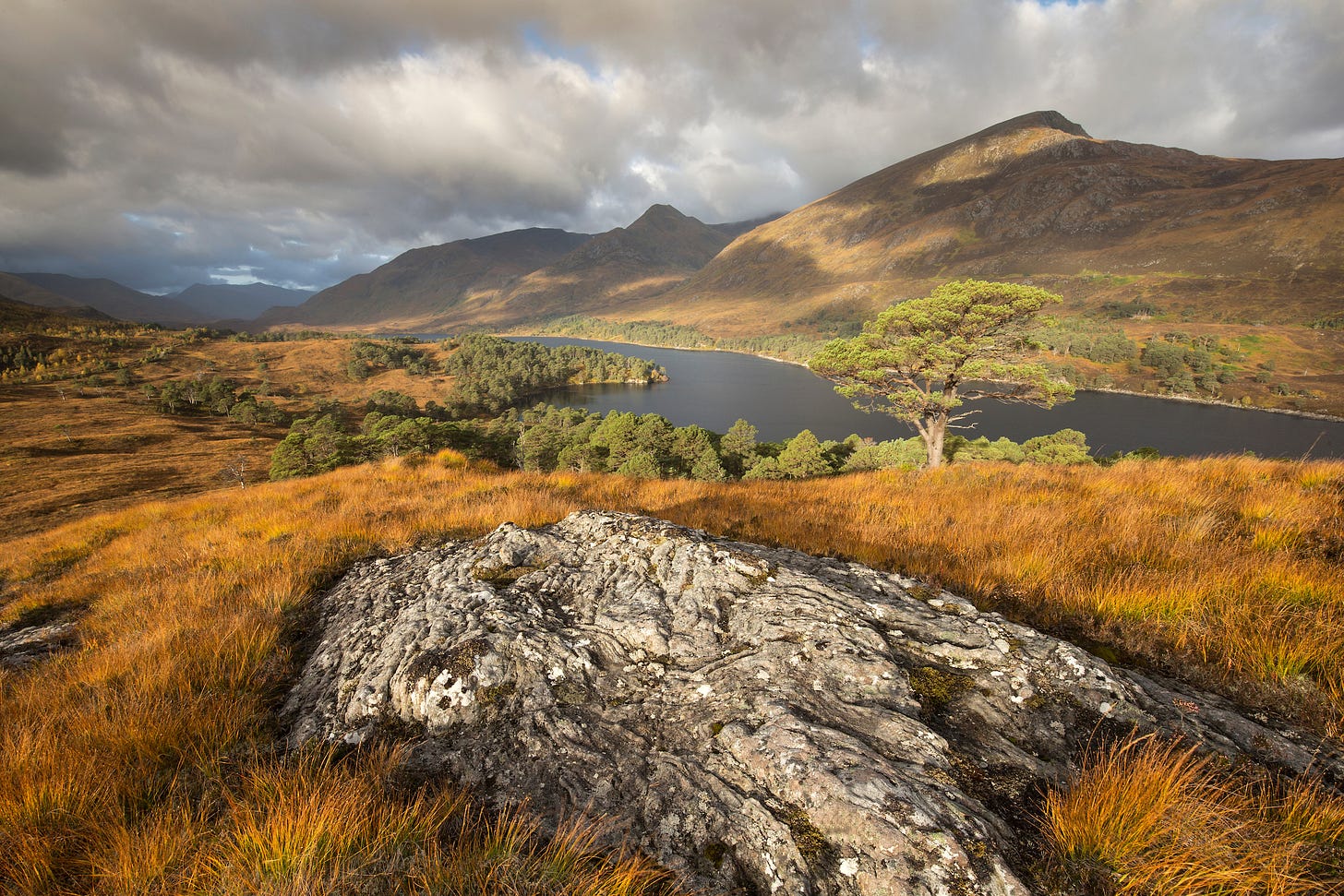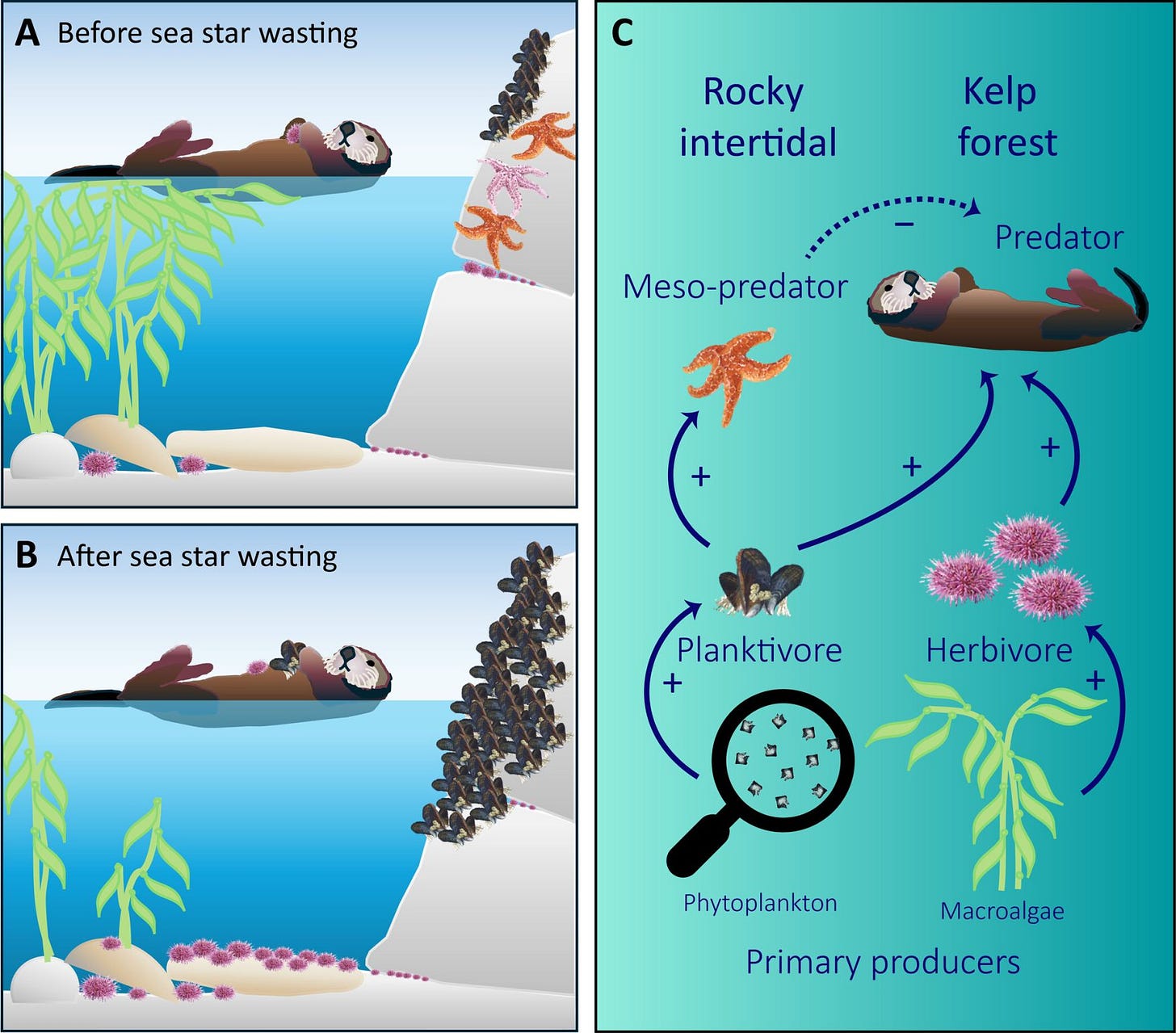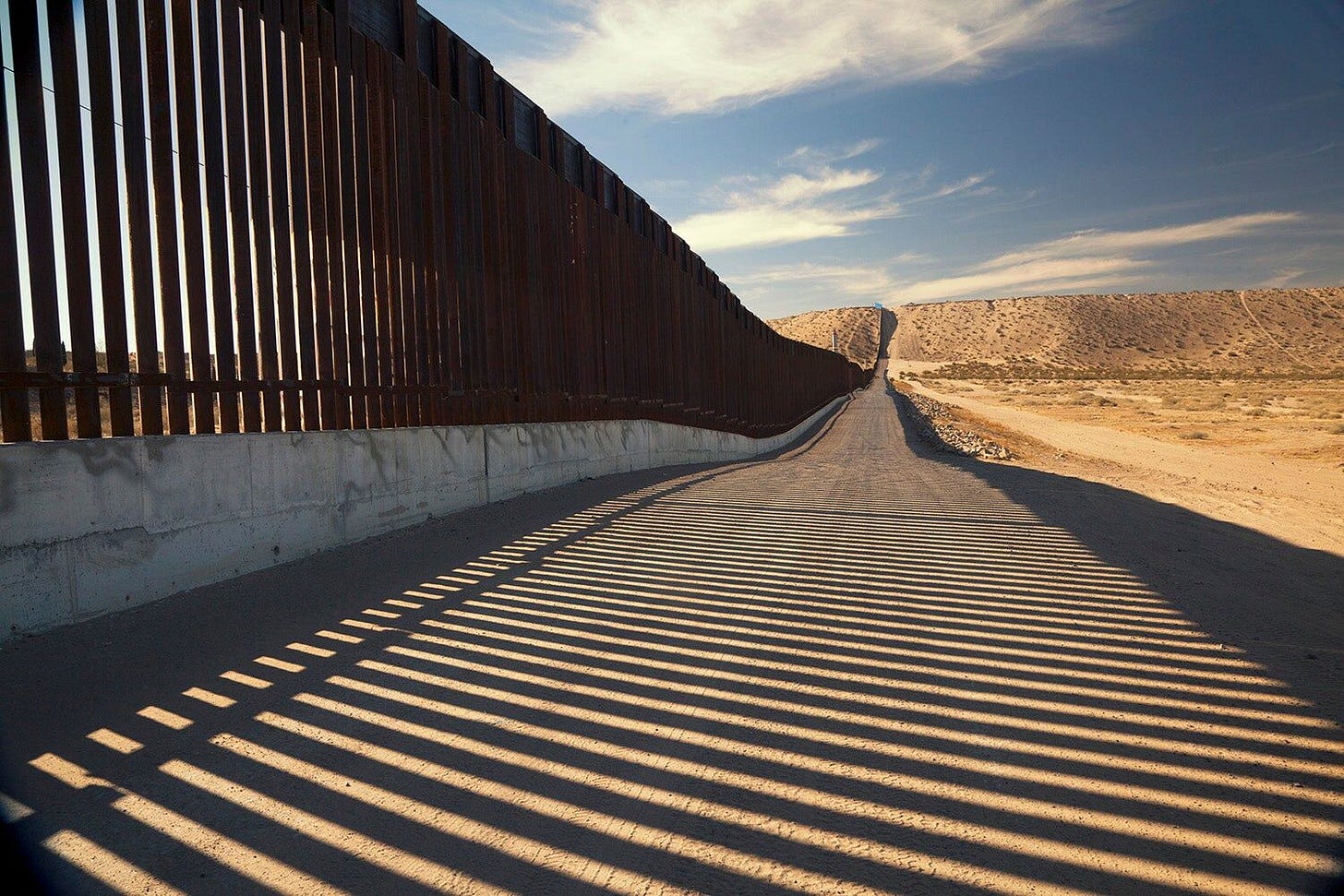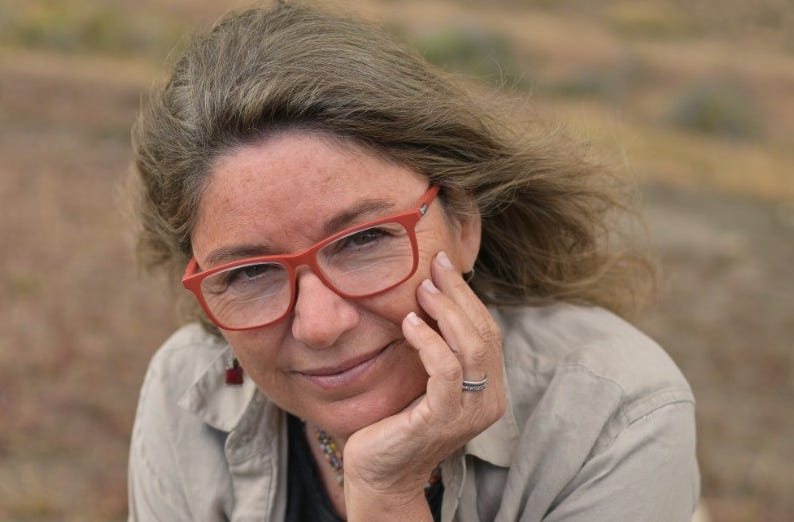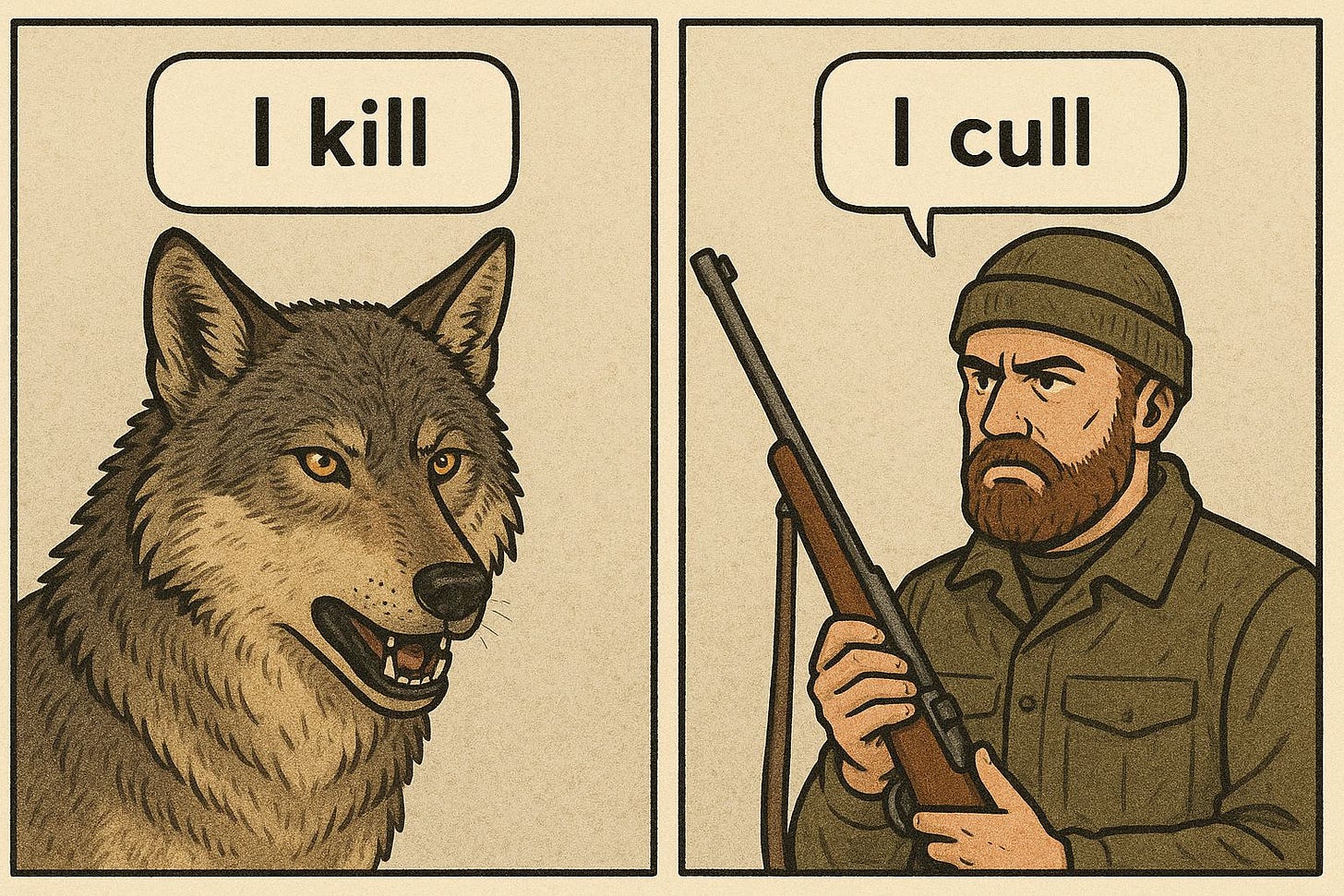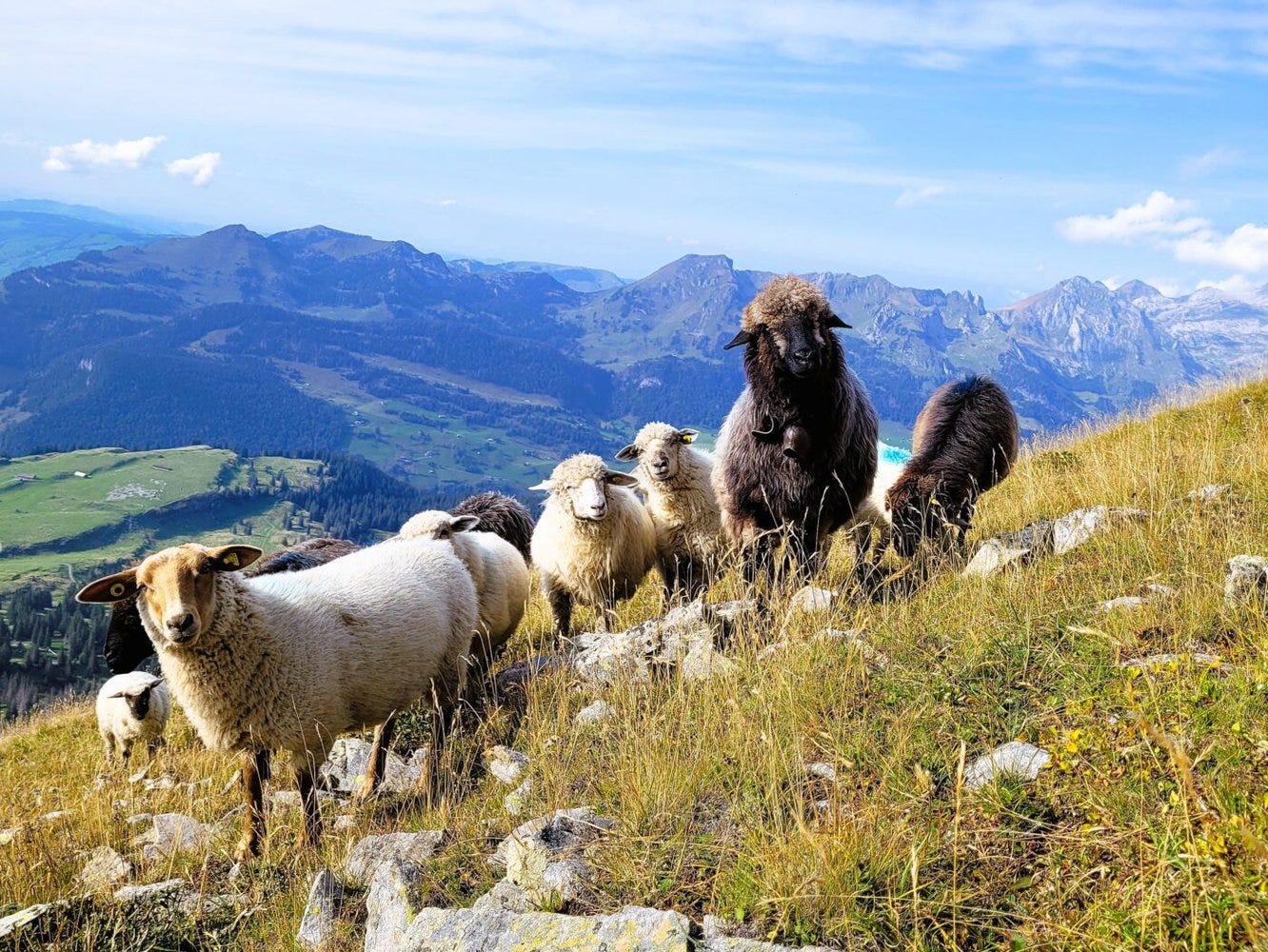Welcome to the latest edition of the Rewilder Weekly! 🦬🌳🐺🌞🌍
Before jumping into this week’s eight selected stories, take a moment to learn about Rewilding Europe’s efforts in Sweden - the 1.75 million hectares (that’s 17’500 square kilometers, twice the size of Yellowstone National Park in the US) have just been renamed from Swedish Lapland to Nordic Taiga (love the name!).
Now then, let’s get on with it - wishing you a good week.
Cheers,
👉 As a reminder: If you come across stories you’d like to see featured in an upcoming edition of the Rewilder Weekly, send them to me and I’ll gladly do what I can.
1) “From the surface you would have no idea that this is happening.”
So says Sir David Attenborough in this clip from the new documentary about the havoc wreaked on the oceans by bottom trawlers. In the documentary, Attenborough rightly highlights that, if humanity only acts, the oceans can recover quickly and that, “if we save the sea, we save the world.” In his inimitable way, the good man doesn’t shy away from the horrible truths (such as bottom trawling), but also leaves us with hope, showing us the path we can take to a better future. Alas, when you watch the above clip, it’ll sicken you.
And when you know that bottom trawling continues at an incredible scale as you read this, you cannot help but be dismayed. The problem really is that all of this destruction happens below the surface and is, because of it, so easy to ignore as I’ve learned when I met with members of the Blue Hope Alliance who are focused on safeguarding maerl beds, and when I wrote about the incredible destructive powers of open-net salmon farming. Yes, Attenborough is right, ocean life is great at bouncing back - but industries so far have shown preciously little interest in giving the oceans the sorely needed time to do so.
👉 Go here to learn all about the new documentary
2) Affric Highlands, now an independent charity, has huge plans for the coming thirty years
Affric Highlands, initially part of Trees for Life, has now launched as an independent charity. As one of Rewilding Europe’s flagship landscapes, Affric Highlands “aims to restore nature across more than 200’000 hectares of the central Highlands over the next 30 years, to benefit nature, climate and people.” Affric Highlands already works with about twenty landowners, making up a total of 58’000 hectares. So you see, they’re already well on their way - the above-mentioned 200’000 are no pipe dream, but instead a very much achievable goal.
Affric Highlands helps landowners to: make peatlands healthy wetland habitats once more; restore native woodlands; bring about a natural grazing balance and much, more more. Affric Highlands executive director Stephanie Kiel says, “Affric Highlands is a community focused vision of hope. It’s hugely inspiring to be setting out as a new charity on this ambitious 30-year journey to take large-scale nature recovery to a new level. We want to create new opportunities and real benefits for local landowners, communities and rural economies, so nature, people and livelihoods can all thrive together.”
3) A studied case of keystone interdependence
“Keystone interdependence” is a term I hadn’t heard before, but I think we all instinctively grasp its meaning. Well-functioning, biodiversity-rich nature, is all about balance. Rewilders are always focused, in a myriad ways, on helping nature regain that balance - then step back and let nature lead. “Our findings of keystone interdependence reveal that conservation of predators in one ecosystem can enhance resilience that transcends ecosystems and protects biodiversity,” said research biologist Leilani Konrad.
Sea stars began dying up and down the Pacific Coast, from Alaska to Baja California, in 2013. Coinciding with a marine heatwave during those years, the sea stars practically vanished. Sea stars are predators and feast on mussels. With sea stars gone, mussel populations exploded. And scientists of the Monterey Bay Aquarium saw that another predator, the sea otter, began changing its diet - more and more sea otters were seen eating mussels. While the disappearance of a predator can have disastrous consequences for an ecosystem, sometimes another predator may be able to fill that void. Inevitably, though, there'll be further knock-on effects - what will it mean to kelp forests, to urchin populations, if sea otters begin to rely more heavily on mussels?
4) Beavers for a more sustainable world
In a new essay, Brendan Fisher, Olivia Buchler and Mariano Rodriguez-Cabal write about their research that began when a dam, fifteen meters long, appeared from one day to the next in one of Vermont’s rural areas. Some celebrated it, overall though, reactions were mixed - and it started a enlightening journey involving everything from research to education. And they found that beavers are also good for our mental health: “In our chaotic, rapidly changing, and often disheartening current climate, we have found that slowing down—by zooming in on and deeply engaging with a project you find fascinating—can be good medicine. In our often oversubscribed, resource-limited, and hectic lives as scientists and students such an inspiring focus, like Castor spp, can allow us, for at least for a short time each day or week, to ignore the hourly changing winds of our sociopolitical context and smile at the constantly changing natural world around us.”
Beavers, ecosystem engineers par excellence, are returning in numbers thanks to protection efforts and a far better understanding of their importance. But it’s also important to note that we’re not even close to the beaver numbers of yore. The researchers highlight that today there are about 10 million beavers in North America - but it once was 400 million! So by all means, celebrating successes is important - but so is remembering the shifting baseline. For beavers to really deliver on their potential, we need to allow them back in far larger numbers.
5) National borders, fenced and walled, are hugely detrimental to biodiversity
The above image shows some of the efforts by the US to control the border with Mexico. For nature, national borders are normally irrelevant but, with physical barriers, become harmful as animals can no longer move as they should be able to, to maintain territories, to keep balance and genetic diversity intact. Thousands of scientists have studied environmental impacts and have petitioned against these walls, citing that they reduce connectivity for wildlife (both flora and fauna) and thus severely compromise biodiversity.
It won’t come as a surprise that the current administration is gung-ho about ignoring all environmental concerns, including the Endangered Species Act, and plans to merrily build more walls right through wildlife reserves. In a way, those border fences and walls are perfect examples to show that we continue to completely disregard the needs of nature for whatever we think is in the best interests of our species. Betterment, for both nature overall and our species, won’t begin to come about until we give nature equal standing and consideration in everything we do.
👉 Go here for visual journey along the US/Mexico border
👉 and here for the excellent “American Scar” documentary
6) Carolina Morgado, rewilding legend
By now I know quite a few rewilding legends and I hope that one fine day I’ll get to meet Carolina Morgado, too. Tompkins Conservation has just highlighted that she’s been at it for thirty years already! Kris Tompkins writes, “From the earliest days working with Doug and myself in the fight to protect the beauty of Chilean Patagonia, she’s been a force, working tirelessly for the wild places we love. From leading the “Patagonia Without Dams” campaign, to helping create and expand ten national parks, and building today's incredible Rewilding Chile team, none of this work would be what it is without her.”
Carolina worked with Doug and Kris Tompkins from the time their conservation efforts in Chile began. She was instrumental in making the land donations to the Chilean government happen and that created SEVEN national parks and the expansion of three others. Caroline explains that this “represents a significant milestone in global conservation efforts, as it marks the largest donation in history in private-public collaboration.” She now leads Rewilding Chile, an offspring of Tompkins Conservation, and is currently immersed in the creation of Cape Froward national park.
👉 Go here for Kris Tompkins’ post
👉 and here to learn more about Rewilding Chile
7) Who is the beast? What makes a “beast”?
Journalist Annick Hus asks an important question: What makes a animal a “beast”? Is it the animal’s nature, or is it the language we employ, and the politics that go hand in hand with the language we choose? As Annick points out: “The wolf debate reveals the selective nature of our moral outrage. It’s seldom about animal protection or scientific evidence. More often, it’s about preserving existing systems. Wolves pose little real threat to livestock because we have effective tools to prevent conflict. What they do disrupt are dominant narratives, economic priorities and our desire to control nature. And that's something we can’t tolerate.”
As she does, I also think it is imperative for our species to look in the mirror and ask those questions. Who’s the beast, really? The one that kills a sheep on a pasture, or the one that transports hundreds of thousands of sheep across borders, then slaughters them without stunning? Who’s the beast, the wolf killing a calf on a meadow, or the ones who take thousands of calfs from their mother at birth, deny them care, confine and fatten them for veal?”
👉 go here to engage with Annick on LinkedIn
8) Instead of adopting coexistence measures, Switzerland is thinking about arming shepherds
The idea of arming shepherds is just that latest in a long series of lobbying efforts to keep the wolf on everyone’s mind, in spuriously fearmongering ways, while clearly neglecting the real livestock challenges in Switzerland. Tens of thousands of sheep die annually in Switzerland not because of the slaughterhouse, but because of accidents, extreme weather conditions, diseases, mismanagement, neglect and cruelty. Of those over 50’000 dead sheep last year, the wolf is responsible for less than 2%.
Farming and hunting lobbies are powerfully represented at top government levels, and the current minister in charge of the environment is leading the anti-wolf charge. France allows for armed shepherds - and research shows that it doesn’t work. Not only does it not work, I personally think it is also highly irresponsible, as more people with rifles will inevitably lead to needless accidents, such as shepherds wounding themselves, or hikers, or their own livestock, or dogs, or other animals. Arming shepherds would do nothing - zero - good for either people or livestock. The path forward for a healthier, biodiversity-rich future is, must be, universally adopted coexistence measures.
To conclude this week’s edition, wildlife artist Charlotte Williams shares with us an up-close and intense look at a cape buffalo bull called Inala. Cape buffalo, a subspecies of the African buffalo, are huge grazers that roam large parts of southern Africa.
If you enjoy the Rewilder Weekly …
… consider supporting my work. Your paid subscription will help generate the funds needed to realize a unique rewilding book I’m working on (if you want to know more about it, let me know). And, of course, that paid subscription also ensures that the Rewilder Weekly will always keep going for those who cannot afford to pay. A thousand thanks!
That’s it for this week’s edition! For more rewilding insights and stories from around the globe, use the #rewilding hashtag on LinkedIn and follow people, organizations and groups that are as passionate about rewilding as you are. Let’s keep connecting and growing the movement!








